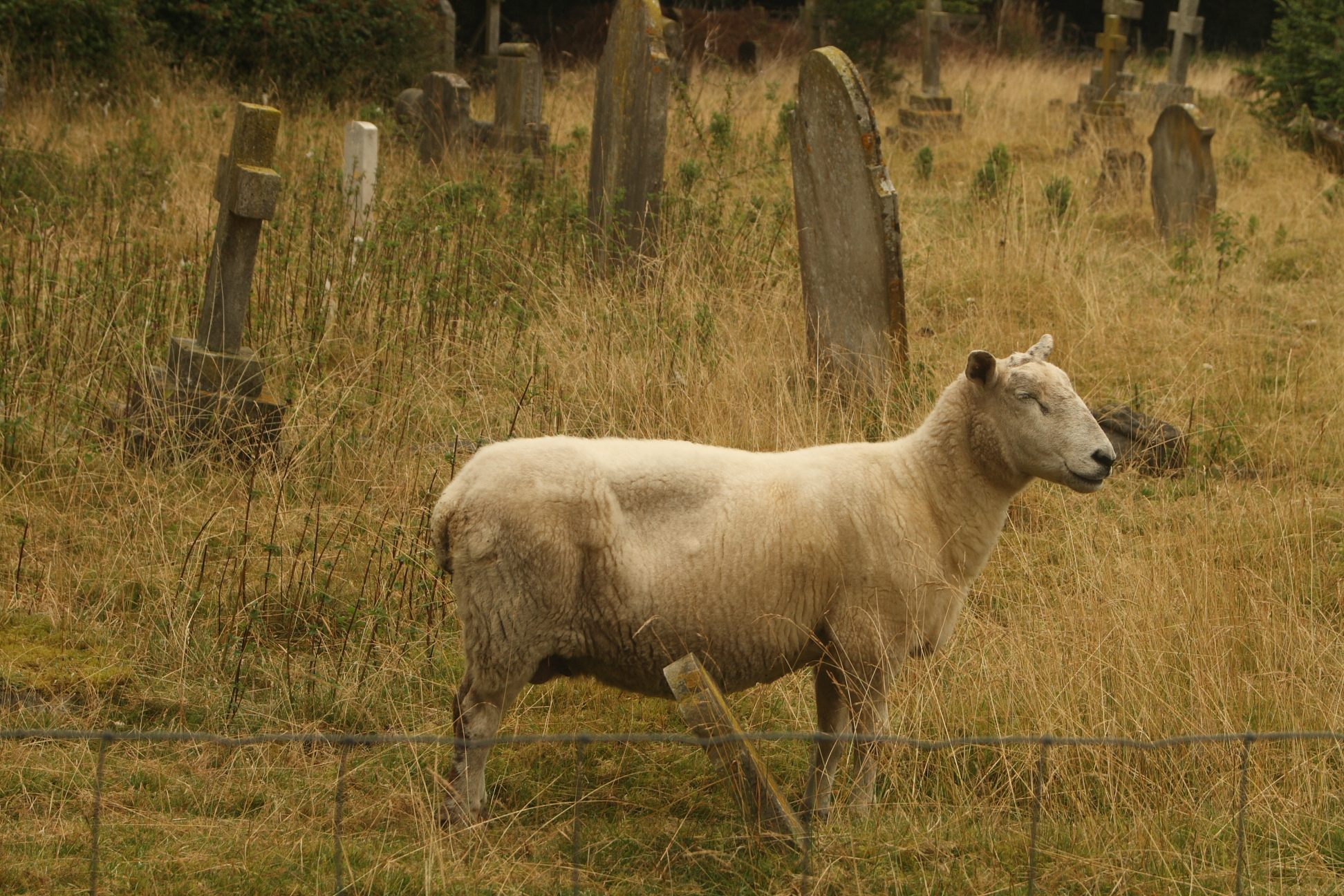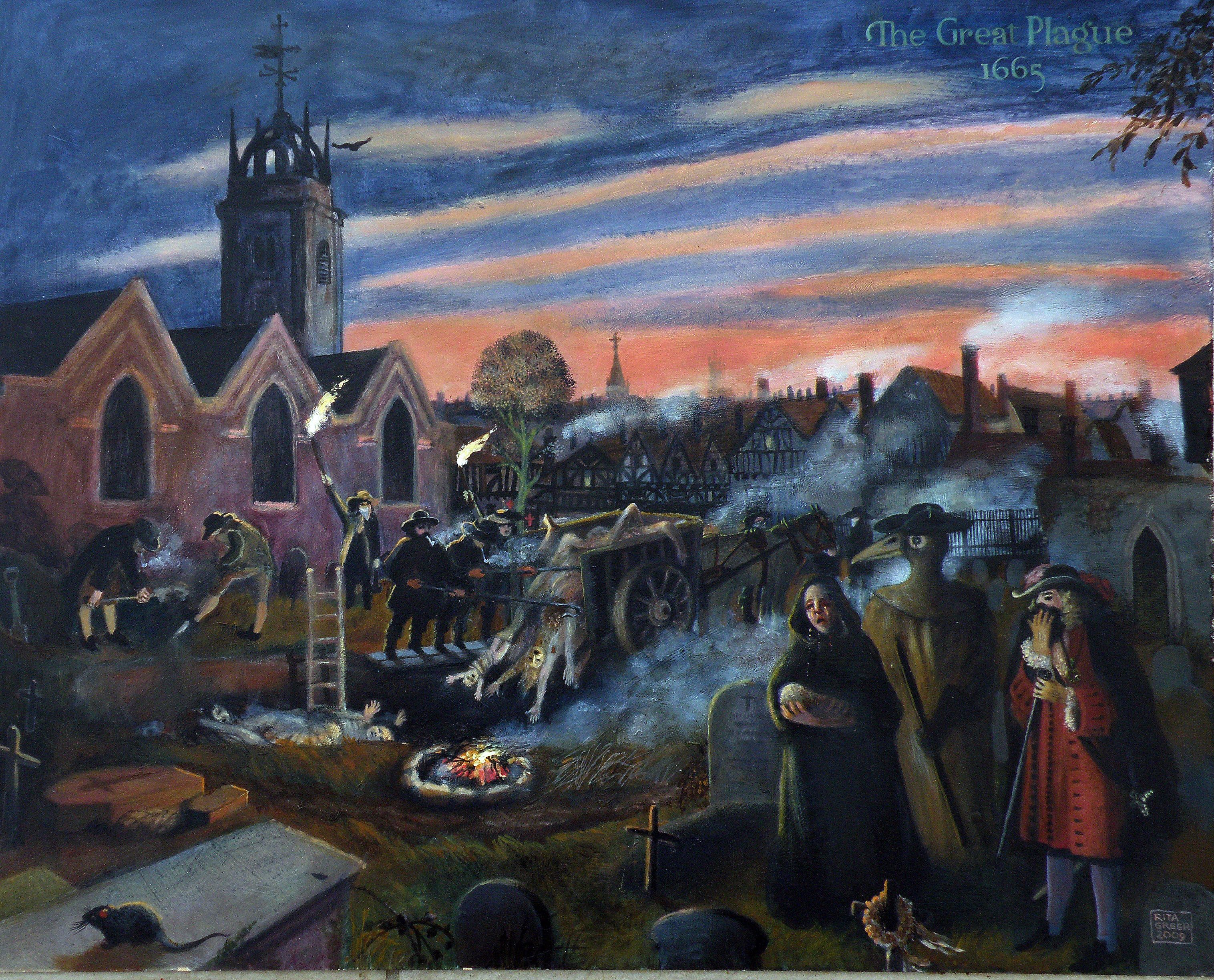Why England Once Forced Everyone to Be Buried in Wool
Transgressors had to pay a heavy fine.

I solemnly swear that this dead person was not wrapped in anything “made or mingled with Flax Hempe Silke Haire Gold or Silver,” but rather in a shroud “made of Sheeps Wooll onely …” This strange and specific oath was taken by witnesses to English burials for more than a century, by order of Parliament. As of March 25, 1667, everyone in the country had to be buried in woolen (rather than linen) shrouds—on pain of a hefty £5 fine taken from the deceased’s estate or his or her associates.
Here’s what Parliament saw in 1665: lots of sheep, lots of imported linen, and lots of death. Lots and lots of death, actually, as it had been a particularly bad time for bubonic plague, which contributed to 219,601 registered deaths by year’s end. Most of those corpses, by custom, would have been buried in linen shrouds. This was of great benefit to England’s cross-Channel rival, France, which provided a third of all the country’s linen. It was England’s second-biggest import, after groceries.
There were five fibers in use at the time—silk, wool, linen, hemp, and cotton—and according to Alice Dolan, a scholar of linen’s history in England, linen has certain advantages over the others. In particular, the laundry process of the time consisted of boiling textiles with lye or soap and then beating them with a battledore, a rustic version of a cricket bat. Keeping one’s clothes clean was an ongoing battle. Linen, which came in a range of qualities that made it accessible to both rich and poor, was valued because it bleached well and easily.
Linen was also part of religious tradition. All four Gospels testify that Jesus was wrapped in linen before he was buried, with Luke and John even describing how the cloth lingered in the tomb after the Resurrection—material proof of a miracle. So linen, which is woven from the fibers of the flax plant, became the norm for burials across much of the Christian world, but this also effectively buried England’s domestic wool industry. To stymie French linen imports, encourage people to buy new wool, and preserve local linen for other uses, Parliament developed “An Act for Burying in Woollen onely.”
As Dolan lays out in her doctoral thesis on the use of linen in the period, a switch to wool burial shrouds could have preserved over 1.9 million yards of linen in 1665. But it was not an easy transition after the act passed the next year. “At first nothing could be more shocking,” wrote philosopher Bernard Mandeville, “to Thousands of People than that they were to be Buried in Woollen.” It’s not clear how well people complied, but Parliament clearly wasn’t satisfied because it introduced more stringent legislation in 1677. It wasn’t a slam dunk. “Our Savior was buried in Linnen,” protested Edward Waller, the representative for Hastings. “‘Tis a thing against the Customs of Nations and I am against it.” Henry Coventry, Secretary of State for the Southern Department, was harsher, suggesting that “men of the Romish Religion” prefer woolen burials to linen. “I fear this Bill may taste of Popery,” he sneered.

But it did pass the next year, and the revamped act had teeth. Burials required written affidavits, from two witnesses, within eight days, affirming that a wool shroud had been used. Clergy were told to document burial fiber in a registry. Anything short of strict adherence brought that crippling fine. It worked. Between 1682 and 1755, just 18 of 505 graves in St. Lawrence’s Church, Cucklington, were buried in linen, according to Dolan’s research. Mandeville suggested that only the older generation—which had been raised to respect the sanctity of a linen burial—was ruffled by the requirement. Maybe wool was worth it to stick it to the French. Or maybe at the end of the day, £5 was just a lot of money—so much, in fact, that informants ratted out linen burials for a cut of the fine.
Mandeville saw an unqualified success: “nothing ever could be said in reason to condemn it,” he wrote. Poet Nicholas Amhurst was even more emphatic, declaring the act, “on all hands, to be the greatest support of the wealth of this kingdom.” There’s no documentation of how much it benefited the wool industry, but Dolan estimates that England could have stopped the import of over 23 million yards of linen between 1679 and 1695, to the tune of some £2.5 million.

There’s some circumstantial evidence to suggest that wealthy people flouted the law and paid the fine to ensure they were buried in flaxen shrouds. A study of St. Nicholas Church in Henstridge, Dolan reports, found that between 1678 and 1707, less than one percent of burials in the churchyard were in linen, but that rose to between nine and 13 percent of burials inside—surely important or wealthy people. A 1678 satirical pamphlet called The Good-Wives Lamentation, or, the Womens Complaint on the Account of Their Being to Be Buried in Woollen, mocked a haughty, fictional woman who paid the fine for her husband’s linen burial, “rather than he shall travel so long a Journey as into the other World like a Beggar, without a Shirt to his back.”
And then, without much fuss, the acts were repealed in 1814. By 1792, says Dolan, authorities had eased up on enforcement, in part because the English economy had diversified beyond its dependence on wool. Cotton burials came also into vogue, and any budding wool shroud tradition never really took hold. But those plague victims—part of the reason behind the period of wool burials—they got to stick to tradition all along. It was feared in the 17th century and for some time after, incorrectly, that wool retained contagions longer than linen would.

















Follow us on Twitter to get the latest on the world's hidden wonders.
Like us on Facebook to get the latest on the world's hidden wonders.
Follow us on Twitter Like us on Facebook